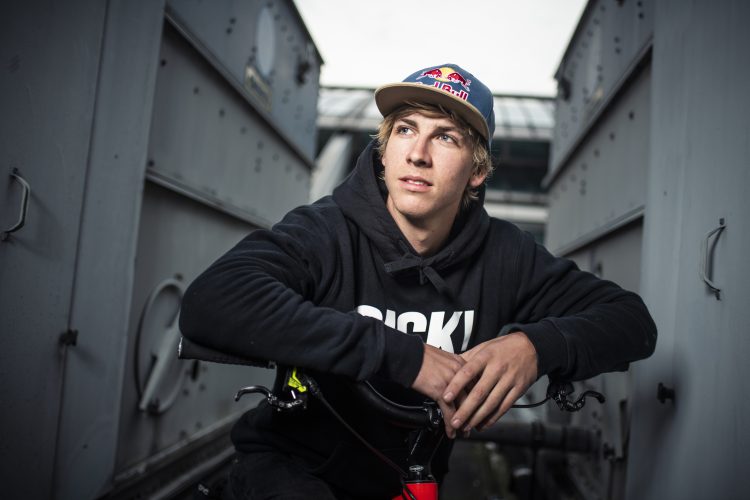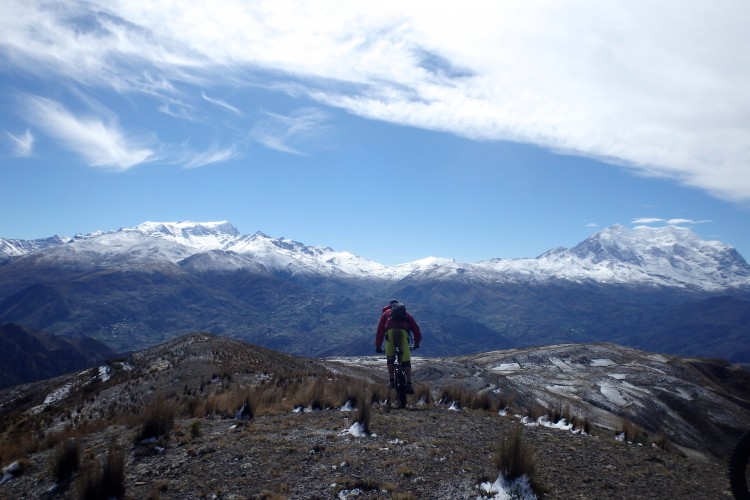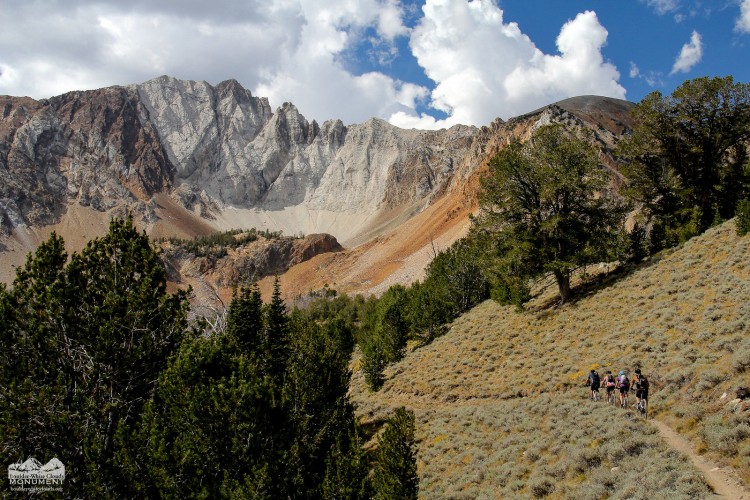
Prologue: Finding a Semi-Hidden Gem
When I go on a quest to find my next mountain biking destination, I’m always on the lookout for a location with killer riding that’s not yet fully-known for its singletrack. The good news is our land is full of such places, places that don’t have the mountain biking rep of Moab or Pisgah, but still have more outstanding mountain bike trails than can be ridden in a single vacation.
So this year, when it came time to drop off Junior for his first year of college at Boise State University, I scoured the nearby opportunities. McCall seemed to fit the bill perfectly. McCall isn’t exactly unknown as a mountain biking area, but it’s not world-famous as a destination for knobby adventures. Perfect: there should be plenty of great tread, and not so many people to share it with.
Introduction: Ponderosa State Park
I arrived in McCall in the evening, so the first day’s ride would have to be a short one. Fortunately, Ponderosa State Park sits right on the edge of town and is home to the short Huckleberry Loop, which makes for a wonderful introduction to the area.
One of the things that makes this ride special, despite its short length and proximity to town, is its location. McCall is bordered on the north by Payette Lake, one of the most beautiful bodies of water in the Northwest. The bike loop in Ponderosa State Park runs along the edge of a peninsula jutting deeply into the lake. As a result, almost the entire ride is spent with at least a partial view of the deep sapphire-blue water stretching out to the deep-hued forest green trees on the far shore. It’s just a delightful place to be alive, let alone spinning cranks on quality singletrack. Idaho is yet another state whose state parks system has discovered the benefits of mountain biking and acted accordingly by building and maintaining quality singletrack for its visitors.
[see_also id=’200398′]
Most of the trail is novice-friendly, but there are a few sharp climbs, a couple tight switchbacks, and some tough rocks and roots to challenge intermediate riders. Nevertheless, the entire trail can be ridden in short order, if not for all the gawking at the gorgeous surroundings. The loop is definitely best ridden in the clockwise direction, and exact entry points aren’t always obvious. However, the visitor’s center has good maps, and it’s worth grabbing one before hitting the trail. Even if you err, you can’t get completely lost on the narrow peninsula, and going the “wrong” direction will still make for a very nice ride.
Chapter 1a: Twentymile Creek
I awoke on day two refreshed, and poked my nose out of my tent into a cloudless blue sky and brisk, clean, 41-degree air. It was one of those days you know right from the start will be grand in every way. For this day, I had chosen one of McCall’s venerable old-school rides, Twentymile Creek. This ride often gets mixed reviews, so I was intrigued to check it out for myself, having no particular expectations beyond simply enjoying a day in the woods where I just happen to have my bike with me. The half-hour drive to the trailhead was spectacular, bordering the west edge of Lake Payette to start, and moving into beautiful pine forest after that. I eventually pulled into a sizable parking area with but one other vehicle, whose occupant I never saw during the ride.

Within a few minutes, I had geared up and was cranking up the trail. Within a few more minutes, I was quite smitten with the ride. For most of this season, I had been riding with friends on the same old trails adjacent to my hometown. When traveling, I had been sinking my knobbies into lift-served bike parks or purpose-built enduro trails. I had completely forgotten about the very unique and sublime joy that comes from cranking alone on a quiet, undeveloped, genuine backcountry trail. The air was pure, the sun radiant, the trees welcoming, and the trail just as it should be.

One of the common slams against the Twentymile Creek Trail is the lack of maintenance. The area was burned in 1994, which still leads to a couple problems today: excessive deadfall and bad erosion ruts. But for my ride, the deadfall had all been cleared, and the occasional rut-inspired dismount bothered me not one bit. Seeing the forest in the process of rejuvenating itself added to the special nature of the ride.

The first few miles go amazingly fast, even as you negotiate all manner of embedded rock, but after the turnoff to Twentymile Lakes (best left to hikers/fishermen), the trail gets progressively steeper and in places, the baby heads become boulders.
But it is oh-so worth it! In between the rough spots are the most stunning alpine meadows, with wildflowers and unobstructed views of the rugged ridges surrounding the valley.
Once at the high point, it’s decision time: turn around, or continue on down to Duck Lake. How much energy do you have? The ride down to Duck is grand, but then you have to climb back out. Nevertheless, Duck Lake makes for a fine destination and is well-worth the effort.
Interestingly, most sources will recommend turning around where the trail gets rough, a couple miles before the saddle and ever further before Duck Lake. Personally, I recommend anybody with some gumption and energy suffer the occasional dismount and anaerobic distress to make the whole journey; it is unique, stunningly-beautiful, and a fine testament to the old school spirit of backcountry bicycle exploration.
Chapter 1b: Bear Basin
After heading back into town for a late lunch, I decided I had enough leg left for a second ride that day. The modest in size–but highly-entertaining–Bear Basin trail network just west of town proved to be just the ticket.
Bear Basin lies in stark contrast to Twentymile Creek. It is largely purpose-built for bikes and definitely has a new school feel to it. It is easily-accessible and heavily-used as opposed to the remote, quiet backcountry rides further from town. It is more a place to play than a place to get away. But it is an excellent addition to the already outstanding McCall singletrack catalog.

Some of Bear Basin’s trails, including both old doubletrack and new, non-threatening singletrack, are suitable for beginners. Others, like “Sleepy Hollow,” duck into woods so dark you can’t wear sunglasses even at high noon. The appropriately-named “The Drain” puts the real flow in Bear Basin, with the most perfectly-built and maintained berms I’ve ever seen. “Lower Drain” adds tabletops and gap jumps between the turns. Throughout, there are optional opportunities for air and serious rock features (with ride arounds), making this place not only fun for all, but also a place where riders of mixed abilities can enjoy a ride together.
Chapter 2: Loon Lake

For day three, I chose to hit McCall’s classic backcountry loop and IMBA Epic, the Loon Lake Trail. Loon Lake can be done as an out-and-back, a 10-mile all-singletrack loop, or a longer loop by incorporating additional singletrack, doubletrack, and fire roads. I opted for the all-singletrack loop, which begins with a cruise down the captivating Secesh River.
The Secesh River Trail, like most in the area, is open to motos, but it was in excellent shape and an absolute joy to ride. It offered mostly buff singletrack so you can gawk at the river, punctuated with occasional rock obstacles, punchy climbs, and exposure. Scarcely a mile into the ride, I concluded this day would be no less glorious than the last.

A few miles down river, it’s time to cross the Secesh and begin the arduous climb up to Loon Lake. Arduous is an understatement. Although only a couple miles long, the climb is relentlessly steep. During my visit, the area was having an unusually hot, dry summer, and had gone literally months without rain. Consequently, the trail surface was ground to deep, powdery dust, making the grade even more difficult to ascend.
This was a tough couple of miles, but the scenery remained spectacular. At one point, I noticed some barely-perceptible movement out of the corner of my eye near the creek far below. I stopped, dismounted, scanned the area, and spotted a juvenile black bear foraging through the deadfall adjacent to the creek. It was just one highlight in a day full of highlights.

Once the trail leveled out, there is a quarter-mile stem to Loon Lake, which stood up to all the stories I had heard. The approach is beautiful and, having started early, I arrived at the lake before any other visitors. It was positively serene. I don’t sit still often, but Loon Lake all but commanded me to do so. I parked the bike, picked a perfectly butt-sized rock, and… sat… allowing the wholeness of the scene to envelop me. That became the Zen highlight of the day.

Even though I sat, that couldn’t last, as there was exploring to do. A hike to the south side of the lake leads to the remains of a crashed WWII-era B-23 bomber. It’s a rather surreal site: hunks of twisted metal sitting adjacent to a beautiful alpine lake in the wilderness. For history buffs, there’s an interesting story behind the crash, and it remains a significant event in the history of the McCall area.

Sightseeing complete, it was time to hit the Loon Lake Trail itself for the ride back down to the origin of the loop. While it’s generally downhill from the lake back to the start of the loop, there are a couple significant climbs along the way, so there’s not much relaxation to be had. The rider will also encounter some intersections with other area trails, so paying attention is necessary as a wrong turn will lead far away, with no easy way to close the loop. Fortunately, trail intersections were all well-marked and perfectly corresponded with the excellent map I picked up at a bike shop in town.

The trail on the return was mostly entertaining, always scenic, and topped off the day perfectly. The only drawback was the occasional sand that would cause some less-than-comfortable surfing when charging in at high speed, which the downhill portions of the trail really seemed to encourage. The last two miles is almost entirely downhill, with very good flow and occasional air opportunities, putting the perfect exclamation point at the end of this fantastic loop.
Epilogue: Jug Mountain Ranch
For my last ride before departing McCall, I hit Jug Mountain Ranch. A strange place this is: essentially a golf community for the well-heeled, they have also built positively-gnarly, and highly-entertaining, mountain bike trails on their mountain. What’s more, they’re free and open to the public.
Wanting to get in as many runs as possible, I chose to wait until the weekend to hit it, when I could take advantage of the shuttle. $20 gets you three hours’ worth of rides to the top in a classic Swiss 6-wheel-drive mountain truck, saving energy for maneuvering all the awesome obstacles incorporated into the various runs. Even a “green” trail like Doe Joe’s has awesome berms and can be ridden at extreme speed. The blue-rated Berm and Ernie’s shades toward very dark blue, with a couple intimidating features. My personal favorite was the black-rated Double Shot, with some excellent, challenging rock features sprinkled in with the air opportunities. For more on Jug Mountain Ranch, see below:
[see_also id=’196065′]
Appendix: Fueling Up
Like most small resort towns in the mountains, McCall has limited options for eats. However, there are a few gems here, especially for the cost-conscious. The new Payette Dream Coffee House (known to locals simply as “the coffee house”), conveniently sitting on the main intersection at town center, serves up a perfectly-fluffy made-to-order omelet for the whopping sum of $3.50! It is the perfect size for a day of riding: hardy enough to provide serious fuel, but not so heavy as to bog the rider down.
If you’re looking for a broader breakfast menu, The Pancake House (also open for dinner on weekends) offers a full range of options with large portions.
In the evening, Growler’s Pizza makes a very substantial pie, with some unique topping combinations available. It’s pricier, but you’ll likely have leftovers, so it still ends up being reasonably economical.
There are also a few more cafes, pizza shops, and Mexican restaurants, most of which offer reasonable prices by resort town standards. Some even have pleasant lakeshore seating to boot.
Conclusion: A Great Destination!
One of the best parts about heading to McCall in mid-August is the temperature. Sitting at only 2,700ft, the treeless hills around Boise can be viciously and relentlessly hot in the summer. At just over 5,000ft and densely-wooded, McCall is far more pleasant.

According to IMBA, McCall is a Silver-level ride center, but it’s pure gold as far as I’m concerned. It has everything I could possibly want in a bike destination and then some. There are excellent, varied trail systems adjacent to town. There are a seemingly infinite number of backcountry riding options, all with big scenery and little crowding. A shuttle service is offered on expertly-designed trails, as well as two lift-served resorts (Brundage and Tamarack). McCall also has a few well-stocked bike shops to provide all your gear needs. Virtually all the trails in the area are open to bikes. The people are warm, welcoming, friendly, helpful, and just carry a cool vibe in general. The lakes are gorgeous, and the mountains are rugged and beautiful. And you get all this in a place where you can get a fuel-rich, pre-ride omelet for just $3.50! What else could a mountain biker possibly ask for?!
I consider myself blessed for getting to experience McCall on a bike. It’s going to be tough when I go to Idaho next year, deciding whether to pick a new destination (my usual choice) or just go back to beautiful McCall.



















